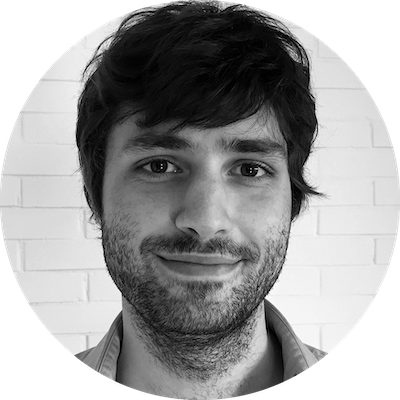
Supervising sound editor Derek Vanderhorst talks about his approach to the sound design for Hala, working in ATMOS, and his experience on No Country For Old Men.
Other than to enjoy some artisanal food while taking a vacation in the Santa Monica mountains, the other reason you might want to visit Derek Vanderhorst's beautiful Summit Post facility would be to take advantage of his long experience acquired as a sound designer and re-recording mixer for a diverse list of filmmakers that includes the Coen Brothers, Adam Sandler, as well as many blockbuster and independent movies. All while remaining one of the most humble and passionate sound artists in the business.
Upon the release of the independent coming-of-age drama Hala, for which he served as supervising sound editor and re-recording mixer, I had the chance to talk to Derek about how one sentence in the script sparked the idea for the role of sound in the film, his excitement for the upcoming Oscars season, and much more.
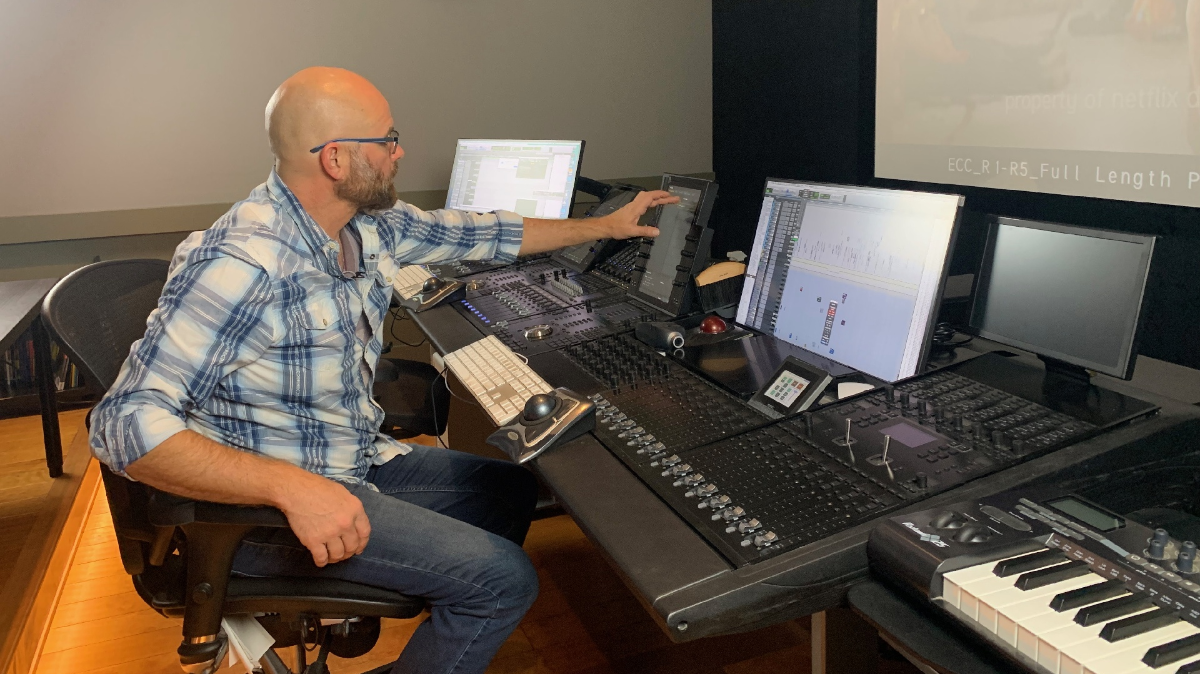
How did your career start?
Derek Vanderhorst: In the mid '90s, I was a Foley mixer at a small place called Coley, which is now closed. While I was doing Foley, I was interning at a facility called DSP, trying to learn sound effects and sound effects editing. Back then, we were just shifting to DAW editorial. I was one of the first in that facility that really understood Pro Tools and the guy I was interning with was pretty new on it, so that gave me my way into the business. I then moved around a bit following a gentleman named Elmo Weber who then started his own facility. At that point he was doing a lot of Adam Sandler’s films and a lot of indie films. So I worked with him on everything he was doing at that time.
There's something special about the small indie films, but it's also pretty exciting doing big blockbusters and doing big sound design, which you don't generally get to do on the small productions. The smaller budgets are more story-driven. So it's fun to pull out all the samplers and keyboards and record a bunch of cars or jets or whatever you're recording for the big films, that's really enjoyable.
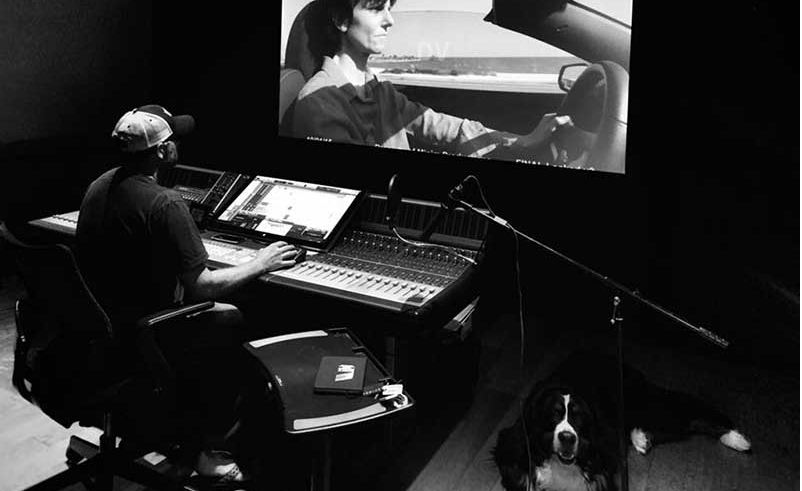 Derek (left) working with good sound boy, Moots (right)
Derek (left) working with good sound boy, Moots (right)
I read there was a line in the script for Hala that inspired you for the direction of the sound design. Can you expand on that?
When I read a script I usually take out a bunch of stickies and start writing little notes to myself. Early on in the script, there’s a voiceover and Hala is talking about what gives her courage and scares her, and it's really silence that makes her most afraid. And so I thought, “that is how we need to approach the film, with a lot of silence.”
Almost the entire film presented itself that way. There were classroom scenes where we would have it very bustling and then as we focus in on Hala we would just bring it down to a hush. She'll be in the hallway of this school and it's just chaos, and then she'll run into a bathroom where it just sucks out all the sound and it's virtual silence. Or even, there's scenes where she's talking in a big kind of library setting, and just make everything really distant sounding, like it was far away from her, so we could really focus on her and the conversation that was going on. There's scenes where she's skateboarding and then all you might hear is the skateboard, with just a light air in the background. So we had a lot of opportunity in the way that [writer/director] Minhal Baig shot the film to utilize that effect.
I actually read the script right before I viewed one of the early cuts of Hala. I like to read the script, because the words kind of give you a different approach than the visual. And I like to think about the sound before I see the film. There are few directors that I work with, David Talbert is one of them, where we'll actually talk about key scenes and difficult scenes in the script before the film is shot. I'll read the script and flag difficult scenes, whether it's 10 people sitting at a table all talking at once, or maybe there is a football game going on, or whatever it is, and we'll discuss the sound, and the implications of the scene on the sound and the implications of the sound on the scene for each shot.
"I like to read the script beforehand, because the words kind of give you a different approach than the visual. I like to think about the sound before I see the film."
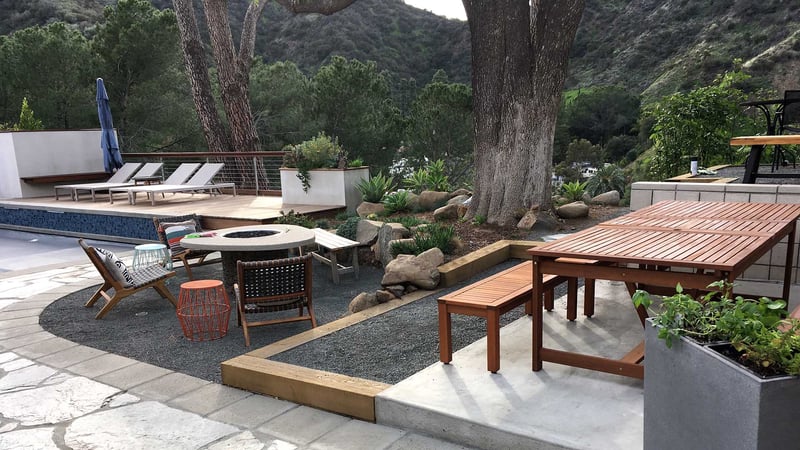 Outside of Derek's facility
Outside of Derek's facility
Hala went to Sundance, and for a first-time director it's...
... pretty incredible, right? Yeah, and in this time and this age, what we're going through and even what you guys are going through, it's nice to see these kind of stories being told. It's a very kind of romantic telling of a coming of age. And she's very poetic in her approach. So for an American film it's really beautifully done, and a first-time director. Also the first film picked up out of a festival for Apple. It's a beautiful film.
There are all these internet based companies jumping into film production. Have you noticed any trends in the stories they are more interested in? Is the way you work with them any different from regular studios?
Well, I know Apple is very new, so I haven't really worked with them, but Netflix and Amazon are coming at it from a pretty independent spirit, where it's driven by story and maybe things that wouldn't necessarily get on network or cable television. So I think it's opened up a lot of things for filmmakers, but I think it's actually making networks and cable look at it and go, "Well, there is a big market for this and there's a bit of interest in it." And I think the way they're approaching filmmakers might be shifting a little bit because of these internet companies. It's so exciting for young filmmakers and exciting for people like you and I who love that kind of independent spirit. It’s still like, “let there be pirate ships out there” doing things kind of independently and rogue, which is always fun and really progressive for the industry.
What's up next for you?
Right now I'm doing sound design on the new Terminator. It looks really good. It's in the early stages of visual effects and things, but boy is it fantastic. It's a big movie for sure in sound and visual and story. Everything about it is big. Then I have another film that I'll be starting, and a couple independent films this spring and summer. Also a couple Netflix things coming up. One I'll probably be in Europe for in April or May, right before they start shooting to meet with the director, who I've worked with a lot, David Talbert. And he's shooting a film called Jingle Jangle. It's kind of a Pinocchio story. It's a beautiful story.
How has your experience been with opening your own studio? With meeting clients face to face, so that side still exists, right?
Since I've opened my own facility, my interaction with the clients is actually greater and more collaborative then when I worked at big facilities. And part of that I think is that with smaller movies their attention is less divided. They're not dealing as much with marketing and with all the groups that are in the big facility.
Is your facility ATMOS ready?
My facility is kind of perfect for near-field ATMOS. But also for designing and doing all of that, it's fantastic to be able to work in an ATMOS environment. A lot of movies are done in ATMOS now. It's almost becoming what 5.1 was in the 90s. The ATMOS mixes might take a week or two to do, which gives the foreign markets time to do their overdubs and everything. Netflix is going almost all ATMOS.
It changes a lot in the design stage now that ATMOS is so widespread, so now we're making a move to edit in ATMOS, because it's easier to fold down to 7.1, and then make your 5.1, and then make your stereo. Whereas if you do just a 7.1 and then the ATMOS mix later, it's a whole separate mix. Craig Henighan is supervising the Terminator film and his template is an ATMOS template to start with.
"When mixing, the screen is our canvas and we are artists painting the screen with sound."
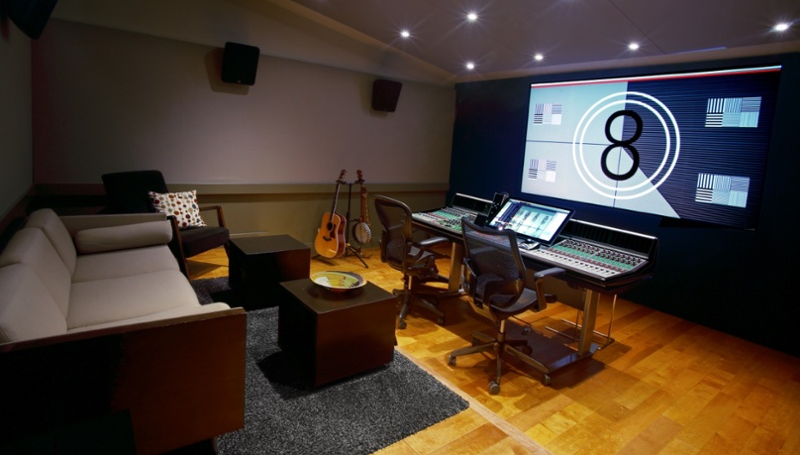
Do you have a general mix philosophy?
One philosophy I always think about, told to me by one of the greatest film mixers Gregg Landaker is: when mixing, the screen is our canvas and we are artists painting the screen with sound. When it comes to dialogue mixing I try and do as little as possible to it, very light compression, I only activate a de-esser on syllables when needed, and as far as noise reduction my go to is the Cedar DNS which I use very sparingly. iZotope RX is an amazing tool, but I use it more for reducing unwanted sounds and frequencies rather than as an overall noise reduction. My go to tool in RX is the gain tool. I will single out a frequency, or specific sound like a bird, cricket, unwanted hit, and gain it down starting around 6db.
What about sound design approaches and tools?
For sound design, I am a huge fan of recording at 192kHz, which gives so much room to manipulate the recordings before degradation. I am also a huge fan of Native Instruments and am using the Soundiron samples a lot on the film I’m working on now. Omnisphere is another amazing tool for sound design. For using space and creating a dreamy dimensional universe, I’m loving Slapper by Cargo Cult. I just finished a project for FOX which is one of the coolest sounding films I’ve worked on and I used slapper to really set the eerie moods and create an ominous space.
But again the best tool is your recorder and recording sounds everywhere you go. I am constantly recording new sounds, especially backgrounds for films. I recorded the exteriors for Hala in Utah, Colorado and Seattle, and the skate park I recorded in Venice as well as dug through production dailies for natural sounds. I embrace the notion of recording new sounds for each and every film, and when I don’t have my recording rig, I always travel with my Shure MV88 iPhone microphone. I have over 30 Terabytes of libraries that I’ve collected, purchased, and recorded over my career but recording new sounds and using them for the first time is as exciting as a child opening a gift on Christmas morning.
"Recording new sounds and using them for the first time is as exciting as a child opening a gift on Christmas morning."
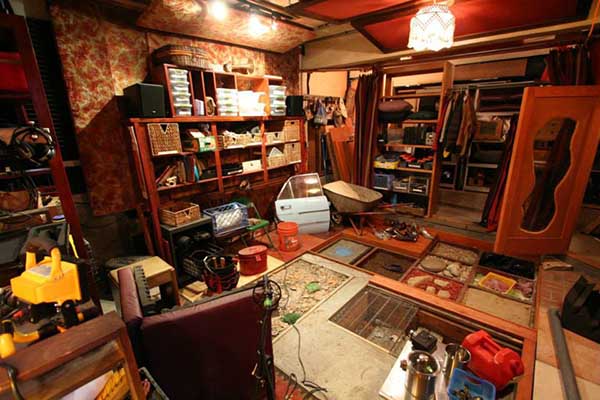 Foley stage
Foley stage
What was your experience working on No Country For Old Men? It's one of my all time favorites.
I supervised the Foley on No Country for Old Men and Catherine Harper was the Foley artist. I don't know if there's a better person for Foley footsteps that I've ever worked with. She's phenomenal, and her props are amazing. The opening of the film where he's walking on the rocks through the dirt, she brought in these big rocks and she would carry pebbles in her hand. And as she walked with the boots, she would just drop little pebbles around her. It was beautifully done, start to finish.
Skip Lievsay, who did Roma and Gravity as well, is the supervising sound editor and mixer for all of the Coen Brothers' films, and so I got a chance to work with him for a few years, and Craig Berkey who does a lot of Coen Brothers' films as well. One of the greatest sound designers of all time, especially for story-driven films like this. I think their work, specifically, really led to it being such a minimalist sound field in that film. So it had a lot more music when it started, and I think after hearing their amazing environments and things the directors started peeling away the music and letting the sound and the moments become the story. Music will often drive emotion, and it's a great tool for driving emotion, but sometimes that emptiness can be very powerful, especially in a story like that.
That's the genius of Skip and Craig, also the genius of the Coen brothers to let it go in that direction. I think Byron Wilson who did the dialogue and Skip and Craig and Catherine just did a couple day talk on that film. It's made such an impression. I was just lucky to be associated with it. It was really phenomenal.
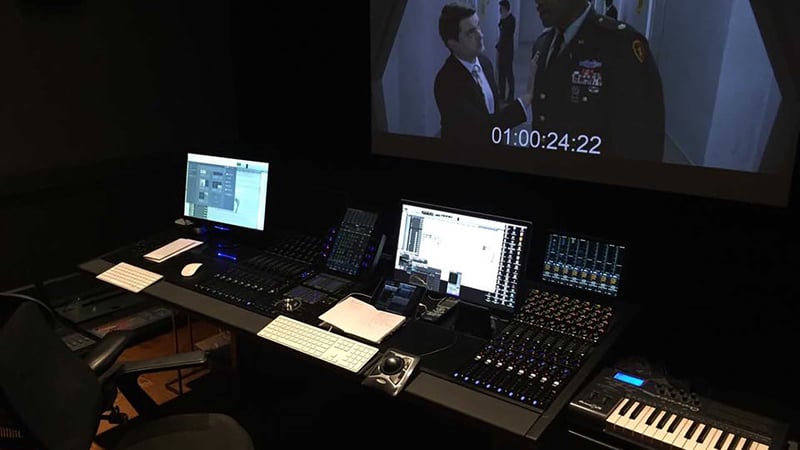
Thanks to Andreas Russo for conducting this interview, and to Derek Vanderhorst for participating!
Follow Derek Vanderhorst:
Website: summitpostsound.com
IMDb: imdb.com/name/nm1038741
Facebook: facebook.com/Summitpost
Follow Andreas Russo:
Website: andreasrusso.com
Instagram: @noiseblender


